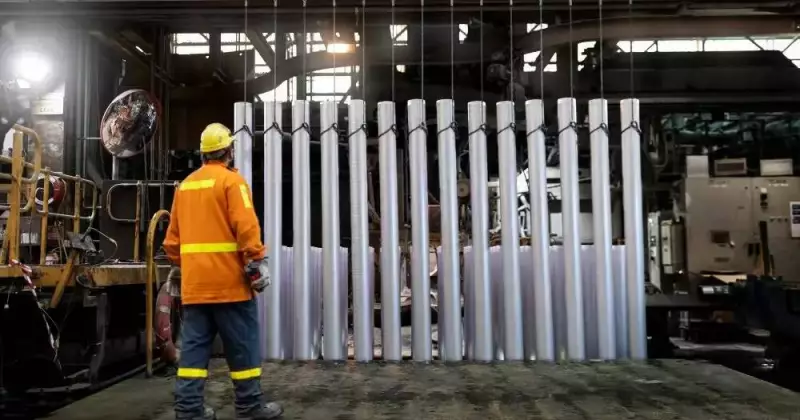
The Australian federal government is actively exploring an unprecedented energy agreement with Snowy Hydro to prevent the potential closure of Tomago Aluminium, the Hunter Valley's largest industrial employer.
Critical Power Supply Deadline Looms
Tomago Aluminium's current coal-fired power contract with AGL is set to expire at the end of 2028, creating an urgent situation for the smelter's future. Market analysis reveals that energy costs from January 2029 would increase dramatically under both coal-fired and renewable options, fundamentally undermining the plant's economic viability.
Rio Tinto, the smelter's major shareholder, confirmed last month that it has reached a critical juncture where it must seriously consider ceasing operations when the current electricity supply contract concludes. Although no final decision has been made, the company has already begun consultations with its workforce about the uncertain future.
Massive Employment and Economic Consequences
The potential closure carries devastating implications for the regional economy. Approximately 1500 direct jobs and between 2500 and 3000 indirect positions would be lost, making it the most significant industrial closure since the BHP steelworks shutdown in 1999.
The Newcastle Herald has learned that government officials are working toward securing an energy supply arrangement with Snowy Hydro, a government-owned corporation, to maintain the plant's operations. The proposed solution involves a scheme financial vehicle (SFV) that would enable the government to contract for clean energy through power purchase agreements and subsequently resell it to the smelter at a stable, predictable price.
Industry and Union Support for Government Intervention
Former Clean Energy Finance Corporation chief executive Oliver Yates recently explained to the Herald that SFVs could provide lower-cost financing and coordinate the construction of necessary wind, solar, and battery storage infrastructure to power energy-intensive industries like aluminium smelting.
"The government effectively writes the long-term contracts for renewable energy and storage, that enables those projects to be built more easily and the cost of finance of those projects is lower, so they can offer a lower charge to the government, which can then be passed on to Tomago," Mr Yates stated.
Industry and Innovation Minister Tim Ayres expressed determination to explore every possible avenue to secure the smelter's future. "I am determined to exhaust every opportunity to secure the future of that site, for the Hunter Valley, for the NSW economy, for Australian aluminium production and for Australia's economy," he told the Herald.
Australian Aluminium Council chief executive Marghanita Johnson emphasised that competitive energy pricing forms the critical foundation enabling Australian businesses to compete internationally. "Despite Australia's world-class endowment of bauxite, a strong alumina refining base and proximity to Asian markets, the industry has been steadily losing ground over the past 15 years," she noted.
Hunter Workers secretary Leigh Shears previously asserted that a viable solution exists to guarantee Tomago's future. "The government can use its balance sheet to secure Tomago the power it needs at the price it needs. But we need the government and Rio Tinto to come together at the table - together with unions and renewable developers - and figure out how to get it done," he said.





